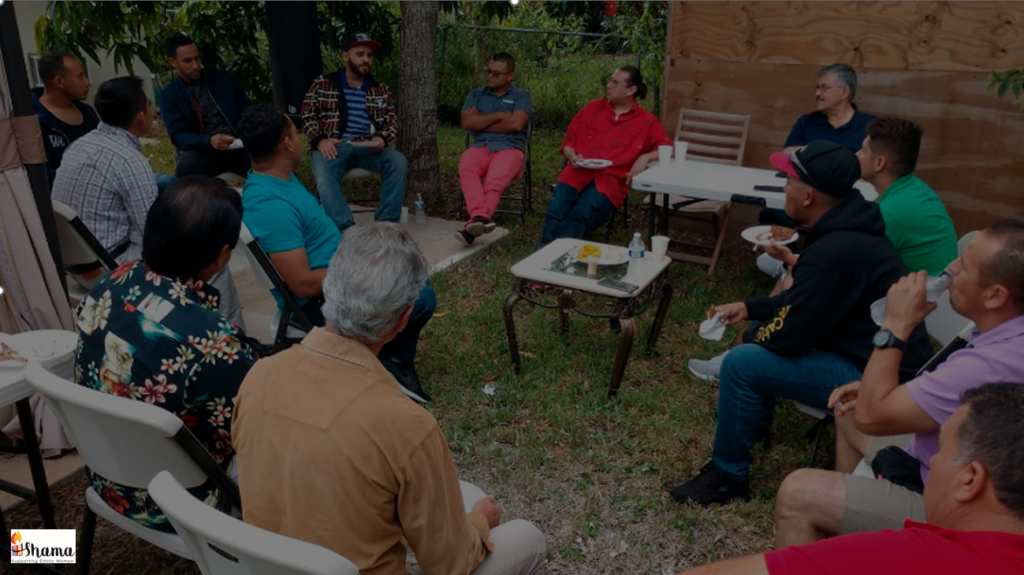
Let's Talk - Men
Set up to engage ethnic men in conversations about healthy masculinity and initiatives focused on preventing sexual harm within ethnic communities in Aotearoa New Zealand, the “Let’s Talk, Men” project involved a series of group discussions and one-on-one interviews with ethnic men on a range of topics including attitudes towards women, raising children, and experiences of living in Aotearoa New Zealand. The project’s objective was to collate positive cultural perspectives on the concept of healthy masculinity within diverse ethnic groups in the country.
This project invited ethnic men to community conversations about healthy masculinity, relationships, attitudes to women, what it’s like for us in New Zealand, how to raise our children, etc. In this way, we could also start developing a network of ethnic men interested in preventing family violence and sexual harm.
About Healthy Masculinity
We use the concept of “healthy masculinity” as opposite to “toxic masculinity”.
Toxic Masculinity is defined as a set of certain male behaviors associated with harm to society and men themselves. Traditional stereotypes of men as socially dominant, along with related traits such as misogyny and homophobia, [1] can be considered “toxic” due in part to their promotion of violence, including sexual assault and domestic violence. The violent socialization of boys often normalizes violence, such as in the saying “boys will be boys” about bullying and aggression.
“Masculinity” refers to the roles, behaviours and attributes seen as appropriate for boys and men in a given society. In short, masculinity refers to society’s expectations of males.
In many societies, boys and men are expected to be strong, active, aggressive, tough, daring, heterosexual, emotionally inexpressive and dominant. This is enforced by socialisation, media, peers, and a host of other influences. And it plays out in the behaviour of many boys and men.
The term “toxic masculinity” points to a particular version of masculinity that is unhealthy for the men and boys who conform to it, and harmful for those around them.
The phrase emphasises the worst aspects of stereotypically masculine attributes. Toxic masculinity is represented by qualities such as violence, dominance, emotional illiteracy, sexual entitlement, and hostility to femininity.
This version of masculinity is seen as “toxic” for two reasons.
First, it is bad for women. It shapes sexist and patriarchal behaviours, including abusive or violent treatment of women. Toxic masculinity thus contributes to gender inequalities that disadvantage women and privilege men.
Second, toxic masculinity is bad for men and boys themselves. Narrow stereotypical norms constrain men’s physical and emotional health and their relations with women, other men, and children.
Toxic masculinity is also bad for men as self-reliance and emotional repression are correlated with increased psychological problems in men such as depression, increased stress, and substance use disorders. Toxic masculine traits are characteristic of the unspoken code of behavior among men in prisons, where they exist in part as a response to the harsh conditions of prison life.
Other traditionally masculine traits such as devotion to work, pride in excelling at sports, and providing for one’s family, are not considered to be “toxic”.
Healthy or positive masculinity is the idea that men can be emotionally expressive, have female friends or mentors, and express their emotions without feeling emasculated.
The following traits are examples of ways to remove stereotypes and encourage men to be their authentic selves:
- Address disrespect
- Encourage men to express emotions freely
- Encourage compassion and kindness towards themselves and others
- Listen to experiences and validate feelings
- Check-in with male friends and loved ones
Healthy masculinity is a key, evidence-based approach to ending violence, but also to men having happier, better connected and less restricted lives.
[1] you can find out more on the following:
Toxic Masculinity and https://theconversation.com/toxic-masculinity-what-does-it-mean-where-did-it-come-from-and-is-the-term-useful-or-harmful-189298 or https://greenhillrecovery.com/toxic-masculinity-vs-healthy-masculinity/


